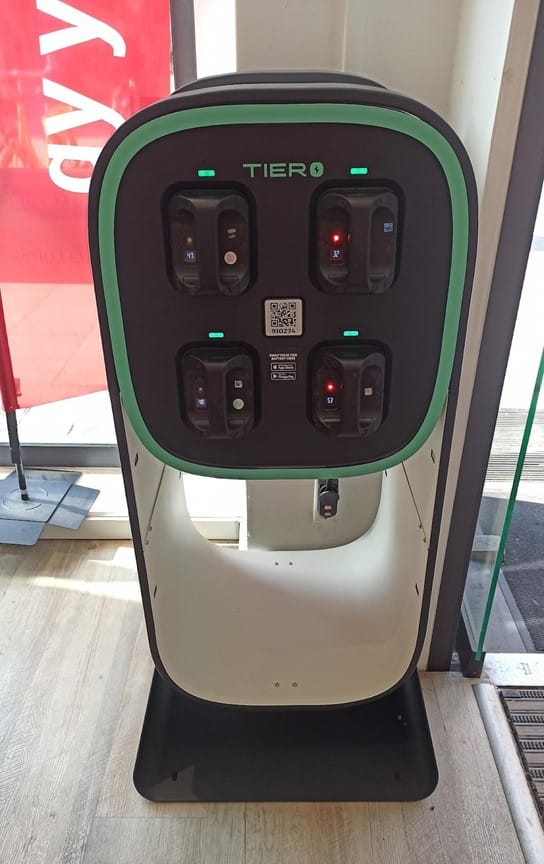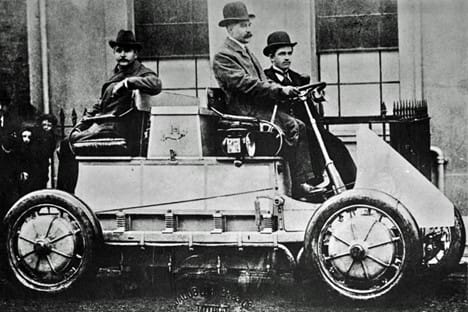Worldwide Transformation: The Electric Vehicle Charging Revolution
The global Electric Vehicle (EV) revolution includes crucial charging infrastructure at home, work, and public stations. Current EV sales: 14 million (18% of annual total). Projected 330 million by 2040 (23x increase). Explore key market elements and invest in this vital infrastructure.

The electric vehicle (EV) revolution is not just about electric cars, commercial trucks, and buses on the road; it extends to the vital backbone infrastructure powering them such as charging in homes, work, or publicly accessible charging stations. The current EV sales are estimated at 18% of total annual car sales at 14 million. Projections by the International Energy Agency estimate 330 million EVs on the roads by 2040, which is a 2300% (or 23x) increase. This EV revolution is global and involves significant developments in government investments, technological advancements, and strategic collaborations. We provide a consolidated look at the key elements shaping the EV market and how to invest in the vital backbone infrastructure.
Global Shift Toward EVs: EV Adoption Surge
While the majority of charging demands are currently fulfilled through home charging. The necessity for publicly accessible rapid chargers is growing. This is particularly crucial in densely populated urban areas, where access to home charging is limited. Public charging infrastructure plays a pivotal role in facilitating the adoption of EVs. As of 2022, the global count of public charging points reached 2.7 million, with over 900,000 installations in that year alone. This represents a substantial 55% increase compared to the 2021 stock, similar to the growth rate observed in the pre-pandemic period of 2015 to 2019, which stood at 50%. In the United States, the ratio of EVs per charger is 24. As the market for EVs increases, public charging becomes increasingly important. For example, for peak periods in prime travel routes in the United States during national vacation periods, temporary mobile supercharges (i.e. large-scale mobile batteries) are used to meet peak demands.

Government Backing and Environmental Commitments: A Global Electric Transportation Trend
EVs and their electrical charging infrastructure contribute to environmental friendliness through reduced carbon emissions. Unlike traditional vehicles that rely on internal combustion engines, EVs produce zero tailpipe (or exhaust) emissions, significantly lowering air pollution. Additionally, when EVs are charged using renewable energy sources like solar or wind power, the entire transportation process becomes more sustainable, aligning with global efforts to combat climate change and reduce dependence on fossil fuels. This shift to cleaner energy and emissions-free transportation represents a crucial step toward a greener and more environmentally friendly future.
Government funding
Governments globally are committing substantial funds to propel EV adoption with policies, incentives, and subsidies, exemplified by the United States providing $7.5 billion for EV charging infrastructure in 2021. The European Union made over EUR 1.5 billion available in 2023 for alternative fuel infrastructure, including electric fast charging. Several countries are outlining plans to phase out internal combustion engine vehicles, reinforcing the shift toward eco-friendly transportation. This signifies a dedicated commitment to a green future, positioning EV charging companies as pivotal players in environmental initiatives. Investors stand to benefit longer term from the considerable financial and regulatory backing provided by governments.

Standard charging connectors for every one
Governments are also addressing the lack of standardization for charging connections which can increase the customer adoption rate of EVs. In December 2023, the United States launched a new connector standard that will ensure an “open source” use for any vehicle or charging equipment to expand charging access for current and future EV drivers across the country.
Stable power grids are needed with increased demands
As countries move away from fossil fuels towards electrical solutions, the higher demand for electricity in concentrated areas will likely strain local power grids during peak power needs. As a result, governments are also upgrading and investing significantly to ensure the stability and reliability of the power needs. There is also an opportunity between EV charging and renewable energy sources that creates a win-win scenario. Charging infrastructure providers can contribute to sustainable practices by integrating renewable energy solutions, making their offerings environmentally friendly.
Data management to optimize user experience
Leveraging the data from charging stations provides valuable insights for optimizing infrastructure, predicting demand, and enhancing user experience. The supply chain continues downstream of these activities, with battery-recycling companies recovering valuable metals, which can again be used in the manufacturing of entirely new components.
Collaboration and Innovation: Driving Change in the EV Charging Sector
EV charging companies are actively engaging in strategic partnerships to provide enhanced services and technological solutions for customer's needs. The recent technological advancements, including ultra-fast chargers delivering up to 350 kW, are enhancing efficiency and user experience. The battery "swap out" option allows users to quickly exchange a depleted battery with a fully charged one, particularly useful during trips to minimize the wait time with recharging. There are also options for EV charging strips integrated into roads that embed charging infrastructure directly into the pavement. These strips allow EVs to charge while driving, utilizing wireless or conductive charging technologies. This innovation aims to enhance the convenience and range of electric vehicles by providing continuous charging opportunities during travel so you do not have to stop.

Invest now, to capitalize on this growing trend
In conclusion, EV charging infrastructure presents a remarkable opportunity for investors. With projections indicating a 23x increase in EVs on the roads by 2040, the global shift toward eco-friendly transportation is evident. To capitalize on this trend, investors should consider the crucial role of charging infrastructure, aligning their strategies with government commitments, and recognizing the collaborative and innovative efforts within the EV charging sector. Common with emerging growing markets longer term investors should focus on companies with strong management track-record that are strategically positioned with diversified businesses, and financially healthy to take advantage of the opportunities. Our research uncovered many smaller or less established firms in this sector that may go through consolidations in the medium to longer term.
Fun Fact
Around 1832, Robert Anderson developed the first crude electric vehicle, but it wasn't until the 1870s or later that electric cars became practical.

Free newsletter content
Every two weeks with our newsletter distribution, we will discuss the market trends in one of our six themes below:
1. Renewable Energy (think solar, wind, hydroelectric)
2. Resources (think hydrogen)
3. Circular Economy (think water)
4. Energy Storage (think battery power grid)
5. Carbon Capture and Storage (think Carbon dioxide CO2 capture)
6. Green Transportation (think electric vehicles)
Premium newsletter summary
With paid Premium content, you can access our select investments now. They are ready to invest today with no minimum investment amounts and they are accessible in established liquid stock markets to easily buy or sell your investments at any time. Make it your monthly habit!
We also include their Environmental, social, and governance (ESG) score. The ESG data focuses on sustainability, diversity, human rights, license to operate, business ethics, and corporate governance. Using 630 metrics, ESG scores provide a comparison of a company's practices with their industry peers. The higher the score the better the company in their peer group.
Return Habit donates 2% of annual profits to underserved communities for green jobs and education. These jobs and training are critical for our community and economy.
